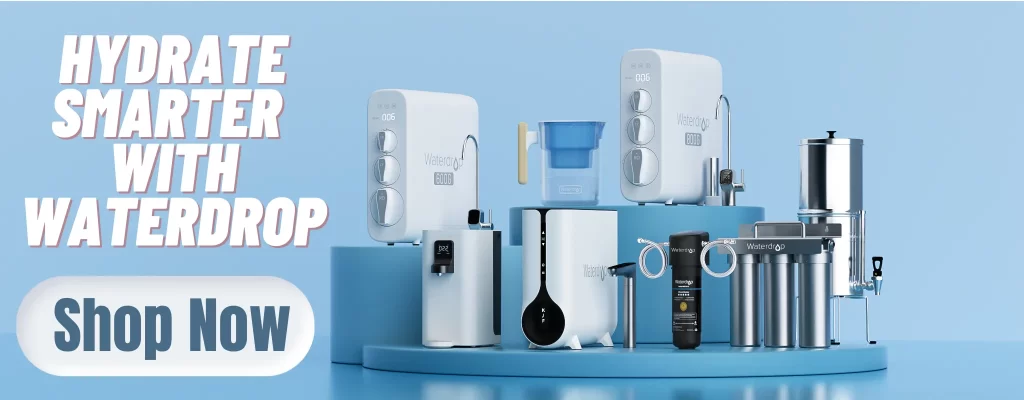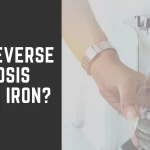Have you ever wondered if reverse osmosis can effectively eliminate glyphosate from your drinking water? As an avid researcher and someone who values clean, safe water, I embarked on a quest to uncover the truth. Join me as we explore the world of reverse osmosis and its potential to rid our water sources of this notorious herbicide.
Table of Contents
The Role of Reverse Osmosis in Water Filtration
As I delved deeper into the world of reverse osmosis and its potential to remove glyphosate from our water sources, I couldn’t help but be fascinated by how this filtration method actually works. Let me take you on a journey through the inner workings of reverse osmosis and explain the components involved in a typical system.
How does reverse osmosis work?
Reverse osmosis is an intricate process that harnesses pressure to purify water. It involves forcing water molecules through a semi-permeable membrane, which acts as a selective barrier. This membrane allows only pure H2O molecules to pass through while blocking impurities such as contaminants, minerals, and even some microorganisms.
Imagine it like this: If we were to compare the membrane’s pores to tiny checkpoints for molecules, only those small enough (like water) would be granted passage while larger particles are left behind.
Components of a typical reverse osmosis system
A standard reverse osmosis system comprises several key components that work together seamlessly:
Pre-filters: These initial filters serve as guards against larger sediments like dirt, sand, or rust particles present in the feedwater. They prevent these substances from reaching the delicate membranes where they could potentially cause damage.
Semi-permeable Membrane: At the heart of every reverse osmosis system lies its vital component—the semi-permeable membrane itself! This thin layer plays an essential role by allowing only solvent (water) molecules to permeate while rejecting most dissolved solids and impurities.
Post-filters: Once purified water passes through the membrane successfully, post-filters provide one final polishing stage before it reaches your glass or faucet. These filters ensure any remaining taste or odor issues are addressed and guarantee high-quality drinking water.
Storage Tank: A reverse osmosis system typically includes a storage tank where purified water is stored until it’s ready for use. This allows for a constant supply of clean water, even during periods of high demand.
Faucet or Dispenser: Finally, the system connects to a dedicated faucet or dispenser that delivers the purified water directly to you.
Evaluating Glyphosate Removal by Reverse Osmosis
As we dive deeper into the topic of glyphosate removal through reverse osmosis, it’s crucial to examine multiple scientific studies to gain a comprehensive understanding. In addition to the initial study discussed earlier, let’s explore another study that offers valuable insights and compare findings across these research endeavors.
Research Findings
In this impactful study, researchers conducted experiments to assess the effectiveness of reverse osmosis in removing glyphosate from water sources. Their findings revealed that reverse osmosis consistently reduced glyphosate concentrations significantly compared to untreated samples. The research emphasized the positive influence of higher feedwater pH levels on removal efficiency while highlighting the importance of membrane type and condition for optimal performance.
Comparative Analysis
To provide a broader perspective, let’s now delve into a comparative analysis that examined various studies collectively, aiming to offer an encompassing view of glyphosate removal via reverse osmosis.
The analysis revealed remarkable consistency among different studies regarding reduced glyphosate concentrations after treatment with reverse osmosis systems. This consensus strengthens our confidence in the efficacy of this filtration method for tackling glyphosate contamination.
However, limitations exist in terms of other co-existing contaminants present in water sources alongside glyphosates. Interactions between these compounds during filtration may affect overall removal efficiency. It is therefore vital to consider multi-contaminant scenarios when evaluating system performance.
Factors Influencing Glyphosate Removal Efficiency
When it comes to evaluating the efficiency of glyphosate removal through reverse osmosis, several factors come into play. Understanding these variables is crucial for optimizing system performance. Let’s delve into two key aspects that influence the effectiveness of reverse osmosis systems: feedwater quality and membrane characteristics.
pH Levels and Temperature
The quality of the feedwater used in reverse osmosis systems plays a significant role in determining how well glyphosate can be removed. Two important variables to consider are pH levels and temperature.
- pH Levels: The pH level of the water being treated affects both glyphosate solubility and membrane functionality. In general, higher feedwater pH levels have been shown to enhance glyphosate removal efficiency. Therefore, maintaining suitable pH conditions within the system is essential for optimal performance.
- Temperature: While temperature variations do not typically impact glyphosate removal efficiency significantly, they can affect other aspects such as pressure requirements or potential fouling issues within the membranes.
Membrane Type and Condition
The type and condition of membranes used in reverse osmosis systems also play a critical role in their ability to effectively remove glyphosates:
- Membrane Type: Different types of membranes exhibit varying degrees of selectivity towards specific substances, including glyphosates. It is important to choose a membrane with high affinity for removing these contaminants while minimizing any potential interference from co-existing compounds.
- Membrane Condition: Regular maintenance practices like cleaning and periodic replacement are vital for ensuring optimal performance over time. Membranes that have become fouled or damaged may experience reduced efficacy in removing glyphosates from water sources.
Additionally, it’s worth discussing potential interactions between glyphosate and other contaminants present in water sources during filtration processes. Co-existing compounds like pesticides or heavy metals may interact with glyphosate, leading to changes in removal efficiency. Understanding these interactions is essential for accurately assessing the overall effectiveness of reverse osmosis systems.
Conclusion
After exploring scientific studies and evaluating the effectiveness of reverse osmosis in removing glyphosate, it is clear that this water treatment method holds promise. Research findings consistently demonstrate significant reductions in glyphosate concentrations through reverse osmosis.







